Zoom
Trash

Climate change impact on the dispersion of airborne emissions and the resulting separation distances to avoid odour annoyance. Highlights Climate change has an impact on dispersion parameters.
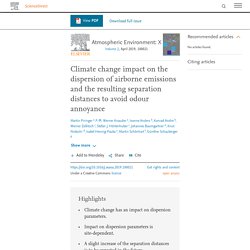
Impact on dispersion parameters is site-dependent. A slight increase of the separation distances is to be expected in the future. Abstract In a changing climate it is expected that the predicted temperature rise will also affect wind conditions and parameters needed to determine atmospheric stability. Integrated air quality modelling for a designated air quality management area in Glasgow. Abstract Currently, most local authorities in the UK use well-established Gaussian-type dispersion models to predict the air quality in urban areas.
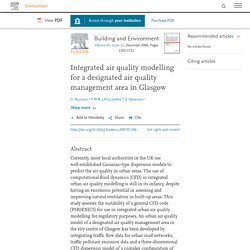
The use of computational fluid dynamics (CFD) in integrated urban air quality modelling is still in its infancy, despite having an enormous potential in assessing and improving natural ventilation in built-up areas. This study assesses the suitability of a general CFD code (PHOENICS) for use in integrated urban air quality modelling for regulatory purposes. Urban air pollution modelling and measurements of boundary layer height. Abstract An urban field trial has been undertaken with the aim of assessing the performance of the boundary layer height (BLH) determination of two models: the Met Office Unified Model (UM) and a Gaussian-type plume model, ADMS.
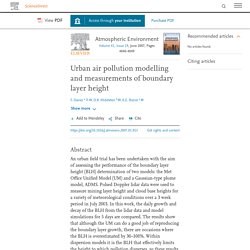
Pulsed Doppler lidar data were used to measure mixing layer height and cloud base heights for a variety of meteorological conditions over a 3 week period in July 2003. In this work, the daily growth and decay of the BLH from the lidar data and model simulations for 5 days are compared. Fullreport. Particulate Matter in The UK 2005 Summary. Emissions of air pollutants in the UK – Particulate matter (PM10 and PM2.5) National Statistics 1.
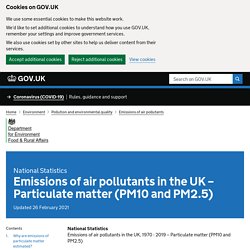
Why are emissions of particulate matter estimated? Particulate Matter (PM) is everything in the air that is not a gas and as such it is made up from a huge variety of chemical compounds and materials some which can be toxic. Due to the small size of many of the particles that form PM some of these toxins may enter the bloodstream and be transported around the body, lodging in the heart, brain and other organs. Therefore, exposure to PM can result in serious impacts to health, especially in vulnerable groups of people such as the young, elderly and those with respiratory problems.
Annual Report 2019 Issue 1 Online Viewer - Defra, UK. New solutions to air pollution challenges in the UK LFSP BP. Impact of Climate Change on Air Quality and Public Health in Urban Areas - Noor Artika Hassan, Zailina Hashim, Jamal Hisham Hashim, 2016. State of the environment air quality report. An assessment of the impact of climate change on air quality at two UK sites. Possible effects of climate change on air quality are studied for two urban sites in the UK, London and Glasgow.
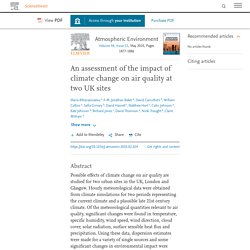
Hourly meteorological data were obtained from climate simulations for two periods representing the current climate and a plausible late 21st century climate. Of the meteorological quantities relevant to air quality, significant changes were found in temperature, specific humidity, wind speed, wind direction, cloud cover, solar radiation, surface sensible heat flux and precipitation. Using these data, dispersion estimates were made for a variety of single sources and some significant changes in environmental impact were found in the future climate. In addition, estimates for future background concentrations of NOx, NO2, ozone and PM10 upwind of London and Glasgow were made using the meteorological data in a statistical model. Clean air strategy 2019. Air pollution and climate change linkages. Modelling the regional effects of climate change on air quality.